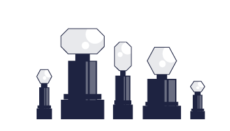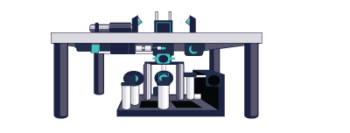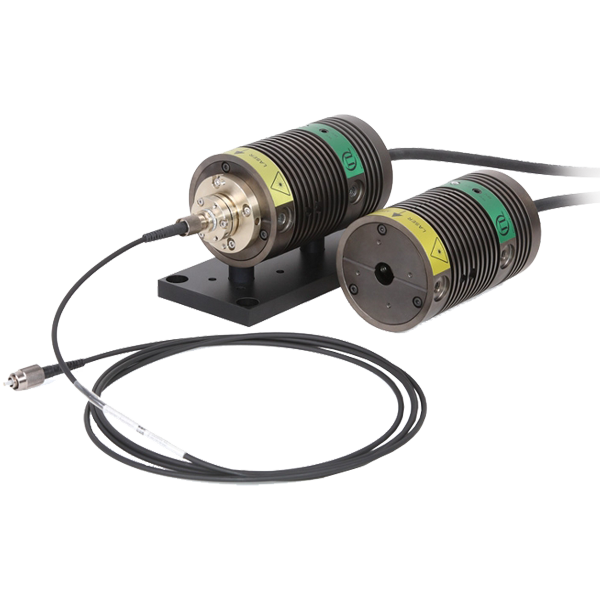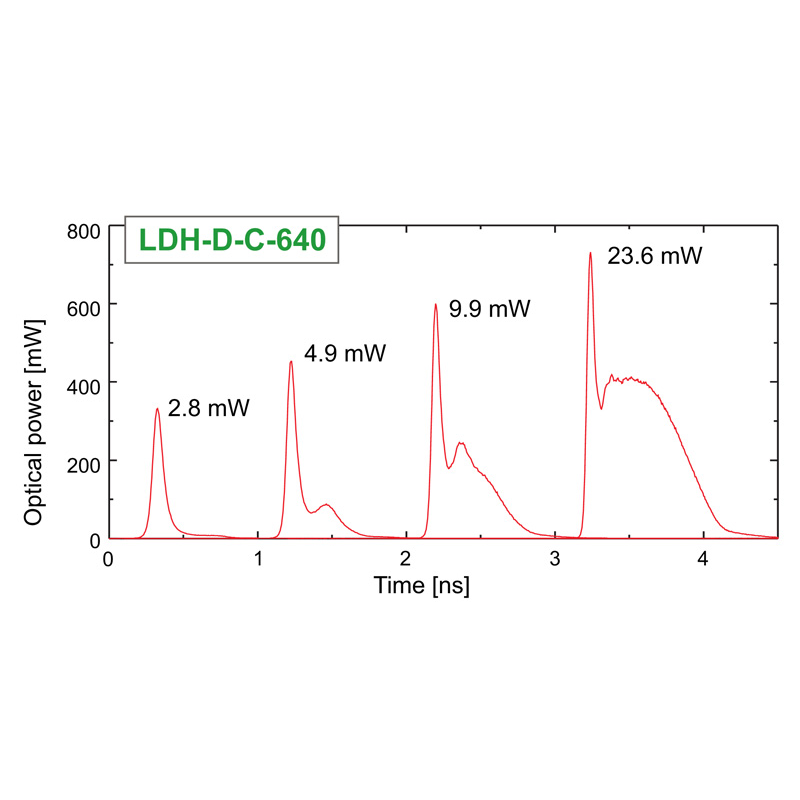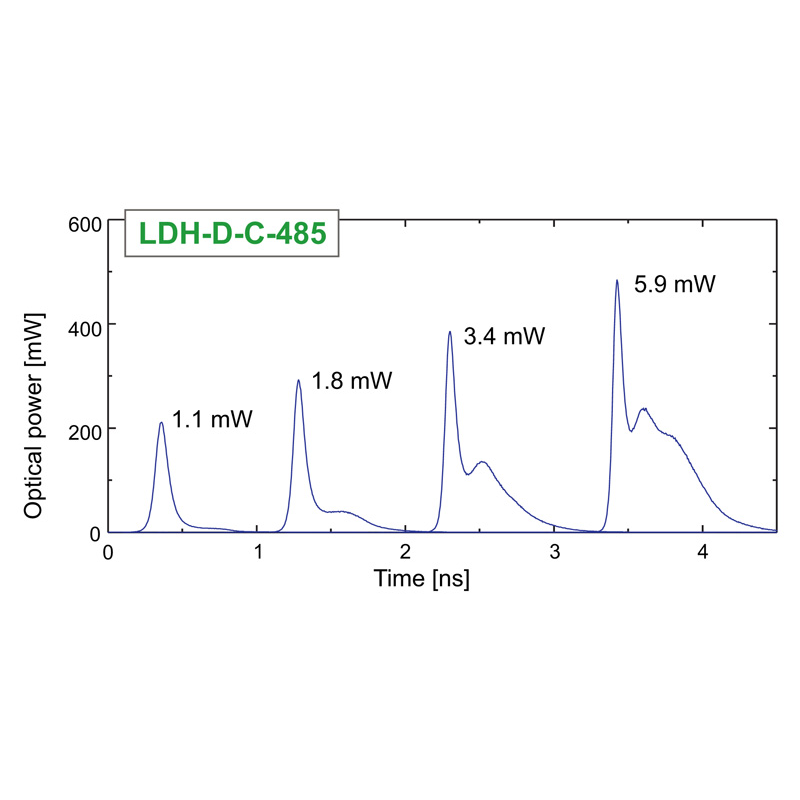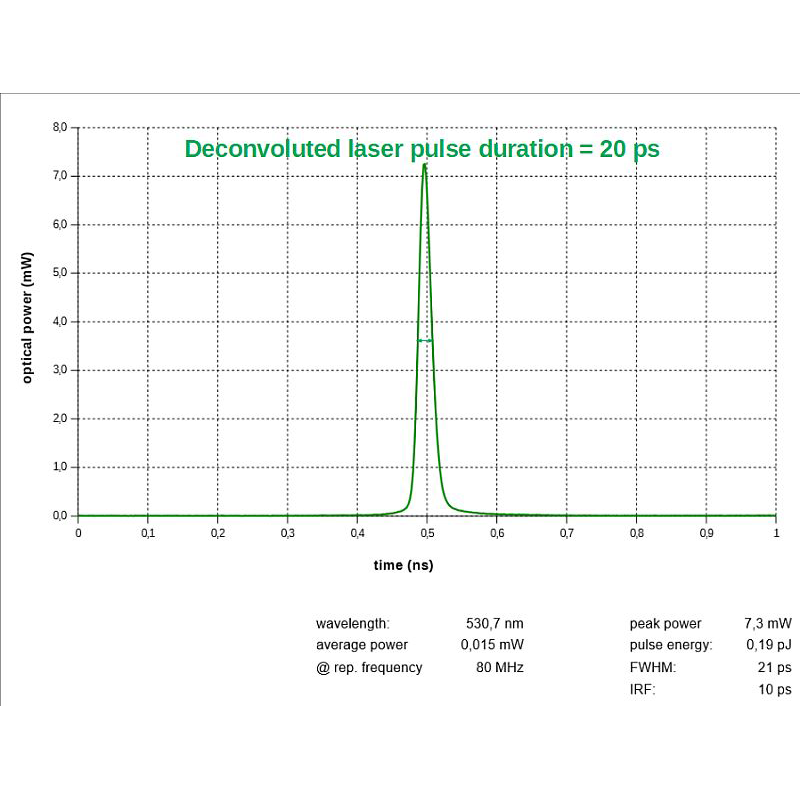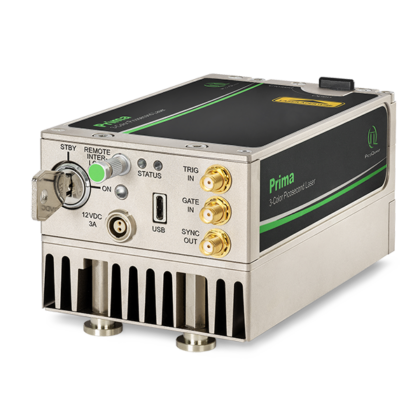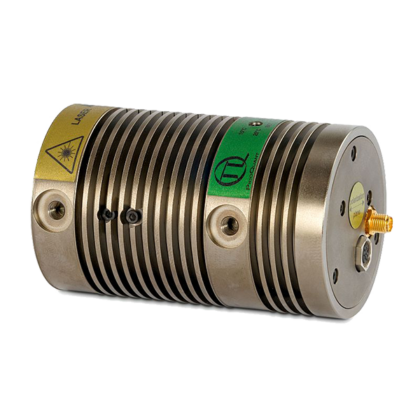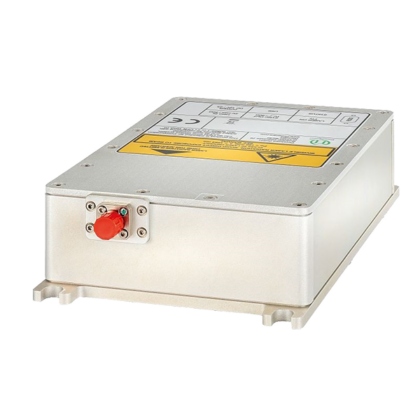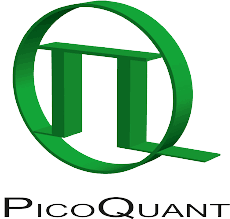Picosecond Laser Diode Heads for PDL 800-D / PDL 828
- 400 mW pulsed laser head at 980 nm for up-conversion measurements
- Wavelengths between 375 and 1990 nm
- Pulse widths as short as 20 ps (FWHM)
- Adjustable (average) power up to 50 mW
- Repetition rate from single shot to 80 MHz
- Optional dual mode: pulsed and CW operation
- Collimating optics, optional fibre coupling and peltier cooling
The LDH Series laser heads are ideally suited for any application that requires picosecond pulses with variable repetition rates. Since we use a wide variety of laser diode types for our LDH laser heads, we can offer a broad range of wavelengths, power values, and spectral widths. Each laser head includes control electronics specially matched to the diode and collimating optics. Different types of optical fibres can also be fitted to laser output.
Pulse widths down to 20 ps
Pulse profile of an LDH-P-C-405 laser headAll LDH laser heads can generate pulses with a temporal width of ca. 100 ps (FWHM), while some models can achieve pulse widths down to 20 ps. Temporal pulse width depends on the laser diode and on the power level at which the laser head is operated (i.e. an optimal pulse width is reached above the laser threshold and can broaden with increasing power).
Adjustable average power of several mW
Example of pulse profiles of the LDH-P-C-485B at different output powersLaser heads of the LDH Series are designed to produce nearly constant pulse energy at a given intensity setting. The commonly achieved pulse energies are typically around a few tens of pJ. At repetition rates of 40 or 80 MHz, this corresponds to average output powers of several mW. Note that with increased output power, the diodes temporal pulse profile will always broaden and might show additional peaks or shoulders.
By varying the total number of carriers (i.e., the driving current) in the diode it is possible to change the output power of the diode. However, a higher pulse power, i.e., a higher injected current leads to additional oscillations inside the laser diode. These oscillations can be seen as Example of pulse profiles of the LDH-P-C-640B at different output powersadditional peaks or shoulders in the temporal pulse profile. As a consequence, an increased output power of the diode always results in an increased pulse width and a non-uniform temporal pulse shape. “Clean” and near symmetrical pulses can only be achieved close to the lasing threshold.
Repetition rates up to 80 MHz
When operated in conjunction with a laser driver from the PDL Series, all heads from the LDH Series are capable of repetition rates ranging from 1 Hz to several tens of MHz. Depending on the diode used, maximum rates of 40 and 80 MHz can be achieved for blue (with wavelengths shorter than 530 nm) and red emitting laser heads, respectievely.
Pulsed and CW operation
LDH-D laser heads can be operated in either pulsed or cw mode. When run in cw mode, they can reach optical output powers up to 200 mW, while power in pulsed mode is identical to that of an LDH-P laser head with the same emission wavelength. Note that dual operation mode is only available when using a PDL 800-D or PDL 828 “Sepia II” laser driver.
Fibre coupling and combiner
The laser heads of the LDH Series can be optionally coupled into a variety of optical fibres (multi-mode, single mode, or polarisation maintaining single mode) via different connector types. We recommend FC/APC connectors for most applications, since they prevent back reflections that can interfere with laser stability. For details see our solutions for fibre coupling.
Furthermore, up to 5 laser heads of the LDH Series can be combined into a single delivery fibre within our Laser Combining Unit (LCU).










